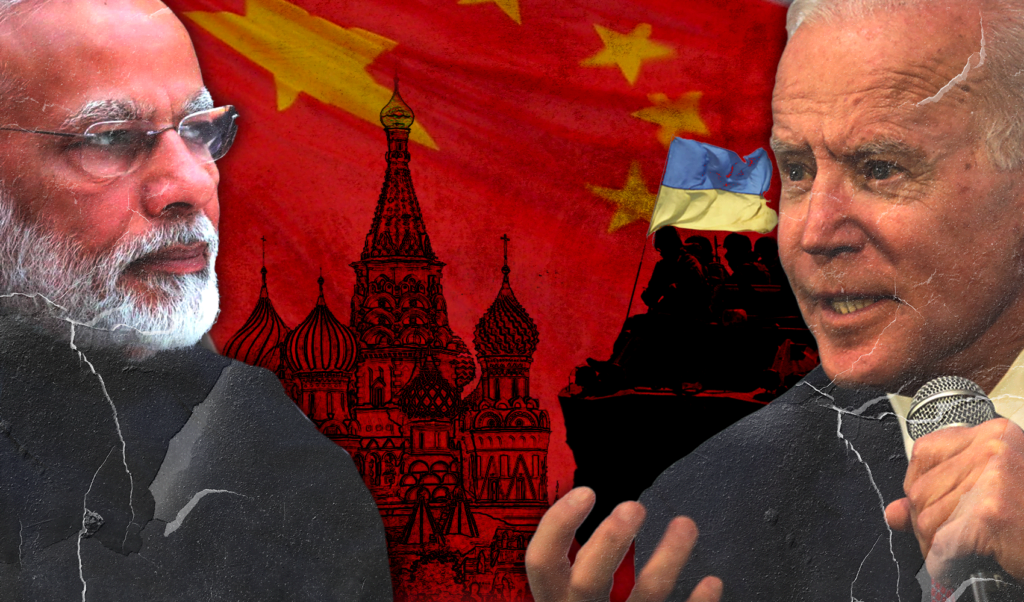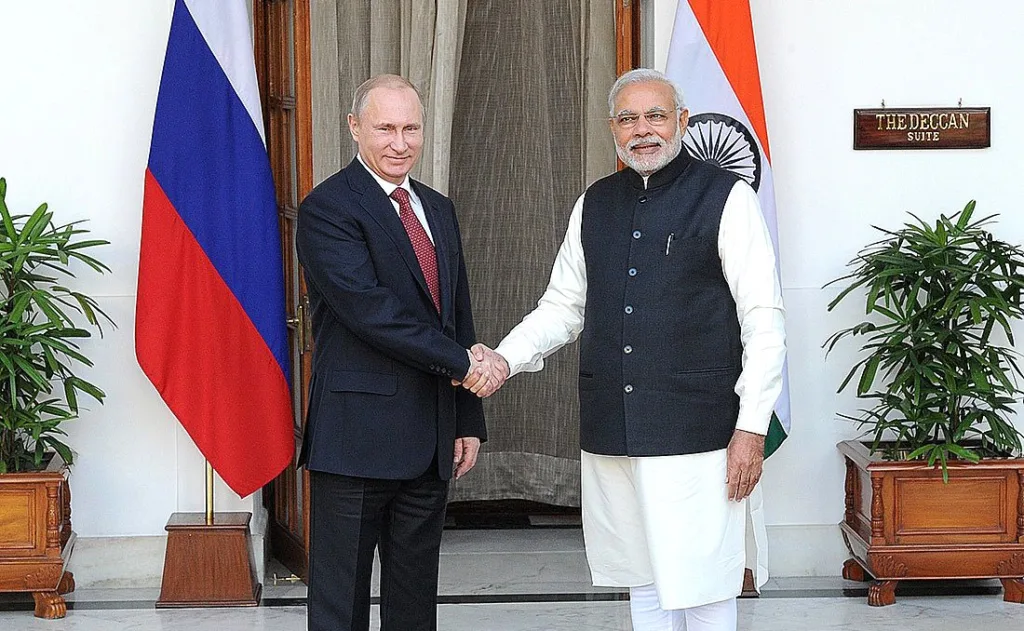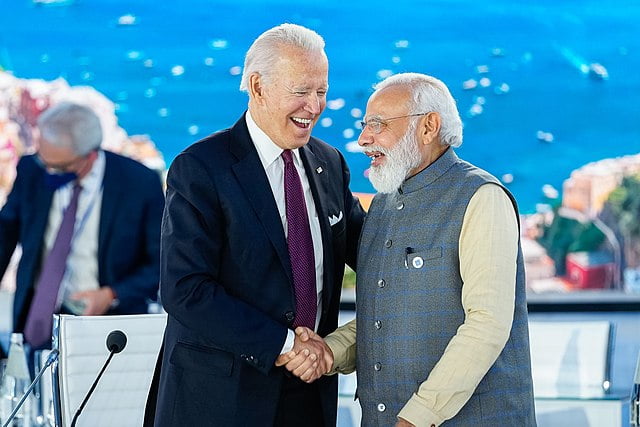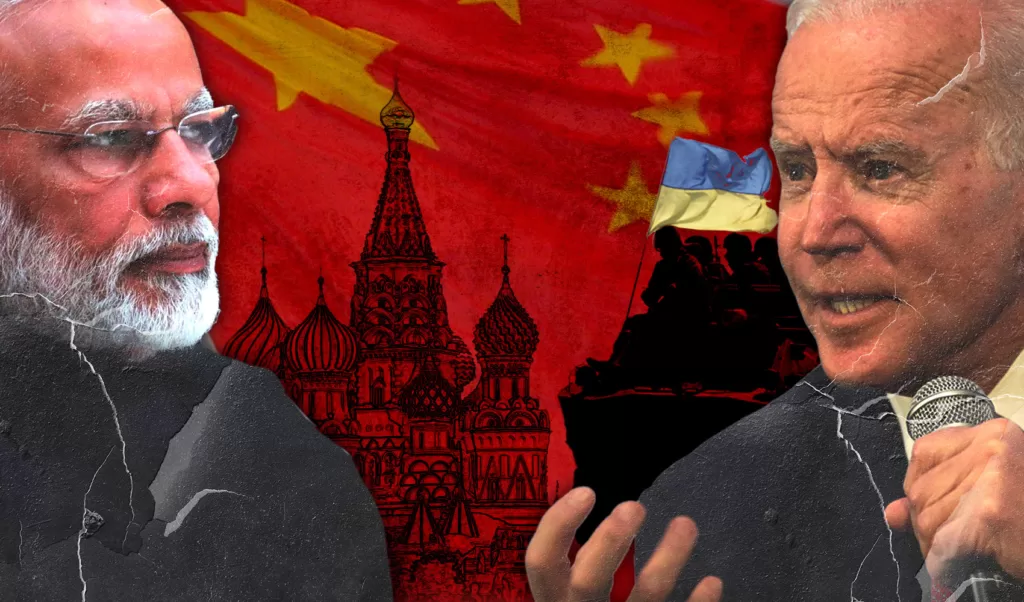If India wants to counter China in the region, it will need American help. The question is how long it will delay this.
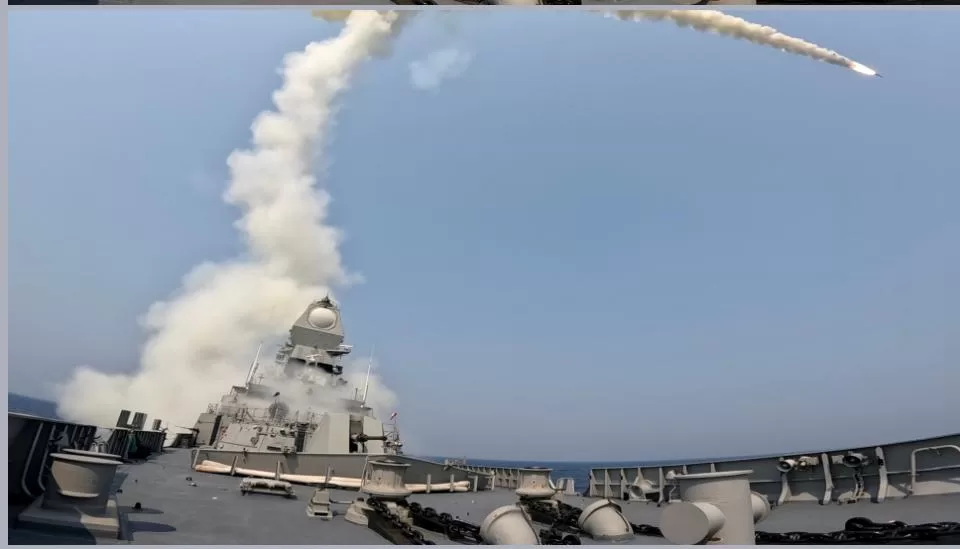 An Indian Navy destroyer during Tropex 2023. Delhi remains considerably behind Beijing in the naval race. : Government of India Government Open Data License – India (GODL).
An Indian Navy destroyer during Tropex 2023. Delhi remains considerably behind Beijing in the naval race. : Government of India Government Open Data License – India (GODL).
If India wants to counter China in the region, it will need American help. The question is how long it will delay this.
China’s no-holds-barred intent and playbook in Asia and beyond have caused realignments of policies and approaches by nations in the region.
With the US deemed to be late in the game of regaining regional dominance and reasserting pushback against China, there is now increasing regional anxiety.
In comes India. While Delhi has historically been a regional leader in the non-aligned movement since the Cold War, realities that entrap Delhi’s security outlook have created a new strategic clarity of the India First doctrine.
In this calculation, Washington has limited options, one being to compartmentalise and fashion ties with Delhi. Likewise, India too has limited options but to work with the US to secure its long-term security orientations.
Well aware of Beijing’s encirclement through the ‘strings of pearls’ theory, the increased Chinese presence in India’s arch nemesis Pakistan and increasingly in Bangladesh and Sri Lanka will need urgent and strategic counterbalance responses.
However, India’s capacity is stretched and Beijing’s expansionism has already forced Delhi to increase its military capabilities and to court its neighbours and the Southeast Asian region in more practical terms, catching up on lost ground and regaining historical connectedness.
The Himalayan border is strategically critical not only to Delhi but also to the West as a crucial second front in stymieing Beijing’s reach and distracting its capacity in the Indo-Pacific, especially in the South China Sea and Taiwan.
This creates a win-win situation for Delhi and Washington. The former will need the latter’s extended deterrence support in securing this front, especially in denying China from re-engaging crucial neighbouring players including Pakistan and Afghanistan in the event of an all-out conflict over the border which will give it the upper hand in the event of a protracted conflict.
Washington will need Delhi to maintain a high-intensity readiness and uncompromising stance on border sovereignty to divert Beijing’s attention and resources.
With the loss of Afghanistan as a strategic geographical asset in counterbalancing China’s Central Asia manoeuvres, India remains the most crucial US partner in encircling China from its most vulnerable land front, its western flank.
US influence over areas under the First and Second Island Chains will be equally important as control of the Nicobar Island chain and this gives Delhi the ultimate card.
While Beijing is increasing its Indian Ocean presence to break Delhi’s backyard advantage, Delhi remains considerably behind in the naval race and submarine capacity.
The US is indispensable for Delhi in keeping Beijing out of the Indian Ocean and the strategic base in Perth, Australia for the AUKUS submarines remains significant for both Delhi and Washington.
The base will provide extended deterrence and integrated maritime security and awareness for the South China Sea, the Indian Ocean and the critical Malacca, Sunda and Lombok straits in Southeast Asia. The latter two remain passageways for Beijing’s submarines to the Indian Ocean.
The US remains the only player capable of supporting India in extending her naval presence and in setting up a blockade in times of conflict to thwart Beijing’s options in the Indian Ocean.
The same tool is mutually needed by both Delhi and Washington at the tip of the entrance to the Strait of Malacca to choke Beijing on food and energy supplies.
Delhi’s own ‘necklace of diamonds’ to foil China’s ‘strings of pearls’ strategy will need the US to complete developing its military readiness and resilience.
India’s peaceful rise as a global player has often been overlooked, but its future regional role in counterbalancing Beijing is insufficient without full head-on support from the US.
Delhi is well aware of its late entry into the Indo-Pacific theatre. For it to counter Beijing’s hard and soft power overtures will require a sustainable, domestic economic and military capacity and a robust network of trusted allies and partners.
Both factors remain elusive and the US is a critical factor in ensuring Delhi gets these two-pronged fronts to secure its own security and ensure its global rise remains on track.
For this, Modi is realistic enough not to fully embrace Nehru’s stance on neutrality and sees the need for a more strategic and lasting model in keeping Beijing out, Washington in, Moscow in the balance and Delhi on the course of regional stability and leadership.
While Delhi’s long-term security assurances will need the inevitable systemic support from Washington, its short-term interests are slightly more susceptible to Moscow’s and Beijing’s aim of using Delhi as both an economic opening and geostrategic leverage in checkmating Washington.
Delhi remains defiant of Washington’s displeasure for not displaying toughness on Vladimir Putin in halting Russian oil purchases. But the oil imports remain crucial for Delhi’s economic and security dependence separate from historical indebtedness to Moscow.
Delhi is also wary of Washington’s courting of Islamabad in trying to deny Beijing’s presence in Pakistan. While Washington can remain tolerant for now, Delhi’s room to manoeuvre is running thin as it tries to squeeze every bit out of its own diplomatic unpredictability.
As much as Modi yearns for Washington’s economic, technological and security assurances, he has also kept his options wide open. While major powers are caught in a dominant power trap and sense of great state autism which hinder policy shifts and compromises, Delhi has better capacity and short-term advantages in moulding its leverage.
The US sees Beijing as its most serious long-term challenge and Delhi is desperately needed as the main anchor in checking Beijing both geographically and in a combined hard power deterrence.
India and the US are not divided ideologically but national interests and immediate survival needs are paramount which have spurred India’s non-abidance to Washington’s full spectrum of expectations.
Friendshoring to maximise US capacity in facing Beijing and for potential de-risking and de-coupling will need Delhi’s unrelenting support as a trusted partner. Delhi on its own will not be able to break Beijing’s regional hegemonic status, not with its current internal capabilities and readiness.
Without breaking from its famous non-aligned model, India — unlike regional players — is not able to plot to get the best out of both worlds, as the outcome will be likely worse for Delhi.
With relatively successful prospects, the US can face off against Beijing without India but can India survive without the US?
Collins Chong Yew Keat is attached to the Centre for Civilisational Dialogue, Universiti Malaya, focusing on strategy and security. He declares no conflict of interest.
Originally published under Creative Commons by 360info™.
Editors Note: In the story “India-US Summit” sent at: 19/06/2023 06:00.
This is a corrected repeat.


